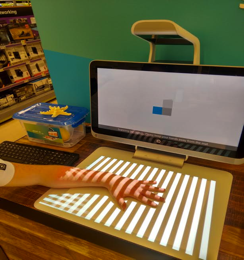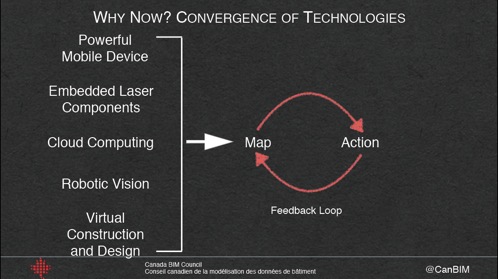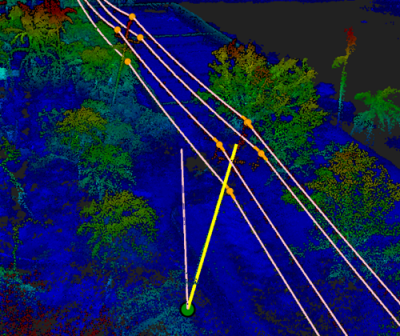I probably should not admit this, but I missed Sean Higgins’ blog post back in October last year when the HP Sprout was first launched. At its most basic level the technique analyses deformations in stripes or patterns that have been projected across a surface. As the price and size of cameras and light sources have fallen, it is becoming ever easier to move these technologies to the computer desktop.
Seeing my first Sprout – structured-light scanning on the desktop
Now one pet-peeve of mine is that even though we are seeing changes (e.g. keynote speakers from automobile companies at SPAR conferences), as a SPAR community we sometimes miss opportunities by not being as familiar as we should be with the 3D imaging tools used in industrial metrology. A quick search for well-established high-end structured light scanner manufactures such as GOM and Steinbichler in the SPAR Supplier Directory yielded no results. What is encouraging to see, though, is how concepts and technologies originally developed for these professional systems are now forming the basis of consumer products that can be found at shopping malls. For anyone who is unfamiliar with structured light scanning, wikipedia provides a good explanation.
So back to my trip to the stationary store; the following two pictures show the HP Sales representative producing a scan of the top side of his hand and lower arm. From the novelty perspective it was nice to see (what I am going to describe as) a 2.5D textured on screen image that was produced using a home computer and which could be moved around the screen at will.

Projected bands from the structured light scanner

Textured 2.5D representation of scanned hand
Ok, that’s cool – but now what?
Glances at 3D industry news feeds such as 3Ders.org, or even search for ‘3D Scanner’ projects on Kickstarter.com will yield frequent references to lower-cost 3D systems, such as those by RangeVision, or CADScan). What makes the HP Sprout interesting though is that rather than being from an obscure brand or a system of a form that is new to many, the Sprout is still a desktop PC that is being sold in the local big-box store.
One of the motives for writing this post was to report back after seeing one of these systems for the first time in the flesh; if you have been involved in 3D imaging for most of your professional career, it is exciting to see ‘scanners’ more accessible to the general public. As reiterated by the citations in Sean’s earlier blog post though, it might further be concluded that the Sprout represents technology that has been released to the marketplace without really having an idea of the use case.
On a positive note, I was pleased to see the recent write-up of the new scanning turntable at the end of June, on ComputerShopper.com. When compared to subjects that we see traditionally discussed in our industry, there is very little mention of subjects such as accuracy, measurement or modelling detail. Instead, we see suggestions for representations of objects being placed in visual simulations, perhaps to assist an interior designer or computer game developer; or simply by a junior school student who wants to print a cool new greetings card that contains their latest LEGO® incarnation?

Scanning toy dinosaur with automated turntable
As discussed, both our industry press (well, Sean and I at least…), and the general computing press, can sometimes struggle to come to terms with defined use-cases for systems such as the Sprout. For the 3D imaging industry in general (not just SPAR), consumer-level systems can perhaps push us to change the perspective that we have on defining new use-cases, in addition to encouraging us to look outside of our industry-specific bubbles too.






